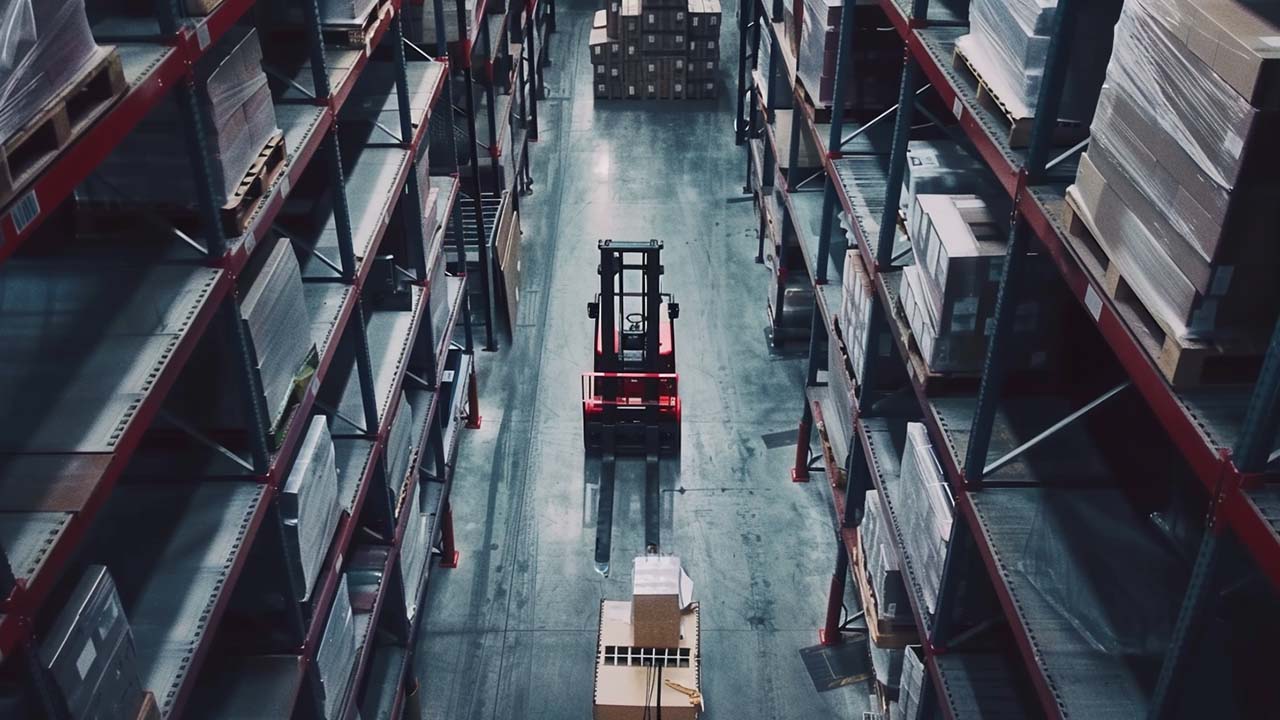Life style
Optimizing Logistics: The Advantages of Integrating Commercial Warehousing into Your Supply Chain

Key Takeaways
- Explore the strategic role of Commercial Warehousing in enhancing supply chain efficiency.
- Discover how commercial warehousing can lead to cost savings and offer scalability for businesses.
- Learn about the technological advancements impacting warehousing and their benefits for logistics.
- Understand the importance of sustainability within warehousing and its appeal to the modern consumer.
- Realize the significance of legal and compliance factors in choosing the right warehousing solution.
Understanding Commercial Warehousing
The fundamental component of an efficient supply chain is the warehousing sector, which effectively streamlines the storage and distribution of products. Commercial warehousing has leaped forward, evolving from simple storage spaces to dynamic solutions assisting in many logistic tasks, including inventory management, order processing, and shipping. Initially, warehouses were designed primarily for storage. Still, they have become crucial nodes in the supply chain that ensure products are readily available and accessible, essential in managing the flow of goods in an increasingly globalized and e-commerce-driven market.
Cost-Effectiveness of Commercial Warehousing Solutions
Reducing costs and improving margins is a central focus for any business. Adopting commercial warehousing can lead to considerable financial benefits. Through outsourcing storage and distribution needs to warehousing experts, companies can convert fixed investments into variable costs, adapting to market fluctuations with greater agility.
Enhancing Operational Flexibility with Warehousing
The flexibility provided by commercial warehousing is a boon for businesses dealing with varying demand and seasonality. It offers the ability to adjust warehousing space and services according to business needs, circumventing the limitations of in-house storage facilities. This scalability facilitates quick inventory adjustment, negating potential sales losses or excess stock holding during fluctuating sales periods. Modern warehouse management system are fundamental in this context, offering robust mechanisms for real-time inventory management and facilitating rapid fulfillment processes. Such operational nimbleness endows businesses with a competitive edge, ensuring they can pivot according to market trends and consumer demands.
Advantages of Geographic Distribution Through Warehousing
The strategic placement of warehouses can dramatically enhance a company’s ability to service its customers promptly. Leveraging commercial warehousing solutions allows for the efficient positioning of products within proximity to end-users, thus minimizing delivery times and lowering transportation costs. The hub-and-spoke distribution model exemplifies this strategy, employing a central warehouse that feeds into smaller, strategically located satellite warehouses. This method enables faster, more reliable distribution and is particularly beneficial for online retailers that compete on shipping speed and flexibility.
Warehousing and Its Role in Risk Management
Warehousing is used for storing items and as a crucial element of a well-devised risk management plan. A network of warehouses can act as a protective buffer against potential supply chains disruptions caused by natural disasters, market volatility, or other unforeseen events. By decentralizing inventory, companies can ensure continuity of operations even if one facility encounters issues. This strategic spread of resources helps mitigate risks and guarantees that products can be quickly rerouted to fulfill customer orders from alternative locations should the need arise.
Boosting Efficiency with Value-Added Services
Modern warehouses are not mere repositories for goods; they are active, dynamic systems that enhance productivity through various value-added services. From assembly and product customization to packaging and labeling, these services contribute to streamlining the production line and moving products to the market more swiftly. Warehousing service providers have honed their expertise in offering these auxiliary services, reducing the need for additional facility space and expediting time-to-market by condensing the supply chain.
Integrating Technology into Commercial Warehousing
Technological advancements have profoundly reshaped the landscape of commercial warehousing. Automated systems and robotics are increasingly becoming the norm, performing tasks with greater precision and consistency than manual labor. Smart warehouses, equipped with IoT devices and advanced analytics, provide real-time visibility into inventory levels, order statuses, and even predictive insights into future demands. This depth of information enables businesses to make informed decisions quickly, aligning their inventory with market demands effectively.
Sustainable Warehousing Practices and Their Benefits
The push towards sustainability has found its way into warehousing practices as businesses and consumers recognize logistics operations’ environmental impact. Energy-efficient lighting, solar power installations, and eco-friendly materials are reducing warehouses’ carbon footprint. Additionally, sustainable practices can favorably impact a business’s bottom line through energy savings and operational efficiencies.
Selecting the Ideal Commercial Warehouse for Your Business
When selecting a commercial warehouse provider, businesses must consider several critical factors. Scalability, customization, and a strong customer service ethos are among the primary criteria. It is essential to partner with a warehouse provider that can tailor its services to match your business’s unique requirements and adapt as those needs evolve. In an era where efficient logistics can make or break a company, aligning with a warehousing partner that prioritizes customer satisfaction and can deliver bespoke solutions is paramount for long-term success.
Legal and Compliance Aspects of Warehousing
Compliance with legal standards and regulations is crucial to warehousing and logistics. A comprehensive understanding of the regulatory framework, especially concerning international trade, is vital. Warehousing providers must ensure that their facilities and processes adhere to strict quality controls and comply with all necessary trade laws and storage regulations. This adherence safeguards against potential legal pitfalls and assures businesses that their inventory is managed responsibly and competently. The legal landscape of commercial warehousing is complex, and maintaining compliance is a critical component of the trustworthy operation of such facilities.
Life style
The Perfect Guide to Choosing Anniversary Flowers

Introduction
Anniversaries are special milestones that celebrate love, commitment, and cherished memories. One of the most timeless and heartfelt ways to express your affection is through flowers. Whether it’s your first anniversary or your fiftieth, the right floral arrangement can convey emotions words sometimes can’t. This guide explores the significance of anniversary flowers, popular choices, and tips for selecting the perfect bouquet. We’ll also discuss the convenience of anniversary flowers delivery and how to make your gift even more memorable.
The Significance of Flowers in Anniversary Celebrations
Flowers have been symbols of love and devotion for centuries, with different blooms carrying unique meanings. Opting for anniversary flowers delivery ensures your gift arrives fresh and beautifully arranged, making the occasion even more special.
Key reasons flowers are perfect for anniversaries:
- Romantic Symbolism – Roses, lilies, and tulips represent love and passion.
- Personalized Messages – Different colors convey distinct emotions (red for love, pink for admiration).
- Timeless Elegance – A well-chosen bouquet enhances any celebration.
Whether you’re near or far, having flowers delivered adds a thoughtful touch to your anniversary surprise.
Best Flower Choices for Different Anniversaries
Each anniversary year has traditional and modern floral associations. Here are some ideal picks:
- 1st Anniversary (Paper) – Carnations (symbolizing young love)
- 5th Anniversary (Wood) – Daisies (representing loyalty and simplicity)
- 10th Anniversary (Tin/Aluminum) – Daffodils (symbolizing joy and renewal)
- 25th Anniversary (Silver) – Irises (meaning wisdom and admiration)
- 50th Anniversary (Gold) – Yellow roses (celebrating enduring love)
Matching flowers to the anniversary year adds a meaningful layer to your gift.
Factors to Consider When Choosing Anniversary Flowers
Before selecting a bouquet, keep these aspects in mind:
- Recipient’s Preferences – Favorite flowers or colors make the gift more personal.
- Seasonal Availability – Peonies in spring, sunflowers in summer, etc.
- Arrangement Style – Classic roses, mixed bouquets, or elegant orchids.
- Fragrance – Some flowers, like lilies, have a strong scent, while others are subtle.
A well-considered choice ensures your flowers resonate deeply with your partner.
Why Fresh Flowers for Anniversaries Make the Best Gift
While chocolates and jewelry are great, flowers for anniversaries remain a classic for good reason:
- Instant Emotional Impact – Bright, fresh blooms create an immediate sense of joy.
- Versatility – Suitable for any anniversary, whether casual or grand.
- Customization Options – Add-ons like chocolates, vases, or handwritten notes enhance the gift.
- Symbolic Longevity – Just as love grows, flowers can be preserved as keepsakes.
A beautifully arranged bouquet is a gesture that never goes out of style.
Tips for Preserving Anniversary Flowers
Make your floral gift last longer with these care tips:
- Trim Stems Diagonally – Helps flowers absorb water better.
- Change Water Daily – Prevents bacterial growth.
- Keep Away from Direct Sunlight – Extends freshness.
- Use Flower Food – Packets provided with bouquets help nourish blooms.
For a lasting memory, consider drying petals or pressing them in a frame.
Unique Ways to Present Anniversary Flowers
Go beyond the traditional bouquet with these creative ideas:
- Flower Subscription – Monthly deliveries to keep the celebration ongoing.
- Flower Wall or Petal Path – For a grand romantic gesture.
- Personalized Message-in-a-Bottle – Combine flowers with a heartfelt letter.
- Surprise Delivery at Work – Make their day extra special.
Adding a personal twist makes the gift unforgettable.
Conclusion
Anniversary flowers are more than just a gift—they’re a timeless expression of love. Whether you choose a classic red rose bouquet or a modern mixed arrangement, the right flowers can make your anniversary unforgettable. With the convenience of anniversary flowers delivery, you can surprise your loved one no matter where you are. And when you select the perfect flowers for anniversaries, you’re not just giving a beautiful present—you’re celebrating your journey together in the most heartfelt way. Choose wisely, and let your flowers speak the language of love.
Life style
Rejuvenation Skin Care: Your Guide to Timeless Beauty and Healthy Skin

Introduction
In today’s fast-paced world, maintaining healthy, youthful skin requires professional care and advanced treatments. At Re-juvenation Skin Care Clinic, we combine science-backed techniques with personalized attention to help you achieve your skincare goals. Whether you’re seeking preventive maintenance or transformative results, our classic Re-juvenation Skin Care Clinic approach blends time-tested methods with cutting-edge technology. This comprehensive guide explores our philosophy, services, and what makes professional skin rejuvenation different from at-home routines.
The Re-juvenation Skin Care Clinic Philosophy
Our Re-juvenation Skin Care Clinic operates on three core principles:
Personalized Treatment Plans
- Comprehensive skin analysis
- Custom-blended product formulations
- Condition-specific protocols
Science-Based Approaches
- Medical-grade equipment
- Clinically proven ingredients
- Results-driven methodologies
Holistic Wellness Integration
- Nutritional counseling
- Stress management techniques
- Lifestyle optimization advice
We treat skin as an organ reflecting overall health, not just a surface to be decorated.
Common Skin Concerns We Address
Our clinic specializes in treating:
✔ Aging-Related Issues
- Fine lines and wrinkles
- Loss of elasticity
- Age spots and pigmentation
✔ Environmental Damage
- Sun damage repair
- Pollution protection
- Dehydration reversal
✔ Medical Conditions
- Acne and rosacea
- Eczema and psoriasis
- Scarring and stretch marks
✔ Preventive Maintenance
- Collagen stimulation
- Barrier function strengthening
- Early intervention strategies
Each concern requires specialized treatment protocols for optimal results.
Our Signature Treatment Technologies
We invest in medical-grade equipment for superior outcomes:
Resurfacing Modalities
- Fractional laser treatments
- Medical microdermabrasion
- Chemical peel systems
Stimulation Therapies
- Radiofrequency skin tightening
- Microcurrent facial toning
- LED light therapy
Injection Techniques
- Neuromodulators for dynamic wrinkles
- Dermal fillers for volume restoration
- Mesotherapy for nutrient delivery
All procedures are performed by licensed professionals with extensive training.
The Classic Re-juvenation Skin Care Clinic Experience
Our classic Re-juvenation Skin Care Clinic package includes:
Consultation Process
- Detailed skin mapping
- VISIA complexion analysis
- Lifestyle assessment
Treatment Protocol
- Deep cleansing preparation
- Customized active serums
- Specialized massage techniques
- Targeted mask applications
Post-Treatment Care
- Homecare product recommendations
- Follow-up scheduling
- Progress tracking
This comprehensive approach ensures lasting results beyond the treatment room.
What to Expect During Your Visit
A typical appointment includes:
- Skin Assessment (15-20 minutes)
- Visual examination
- Digital imaging
- Treatment Session (30-90 minutes)
- Cleansing and prep
- Primary procedure
- Soothing applications
- Post-Care Consultation (10-15 minutes)
- Immediate aftercare instructions
- Product recommendations
Most clients notice visible improvements after just 1-3 sessions, with optimal results appearing after a complete treatment series.
Maintaining Results Between Visits
Extend your clinic results with:
✔ Medical-Grade Homecare
- Pharmaceutical-strength retinoids
- Antioxidant serums
- Growth factor formulations
✔ Lifestyle Practices
- SPF 30+ daily application
- Adequate hydration
- Antioxidant-rich diet
✔ Periodic Maintenance
- Monthly facials
- Seasonal peel treatments
- Annual skin assessments
Consistency is key for sustained skin health improvement.
Conclusion
At Re-juvenation Skin Care Clinic, we believe beautiful skin begins with healthy skin. Our classic Re-juvenation Skin Care Clinic methodology combines advanced dermatological science with individualized attention to address your unique complexion needs. From cutting-edge treatments to timeless skin care wisdom, we provide comprehensive solutions for all skin types and concerns. Whether you’re beginning your skincare journey or seeking to enhance an existing routine, professional guidance makes the difference between temporary fixes and lasting transformation. Schedule your consultation today to discover how our evidence-based approach can help you achieve and maintain your healthiest, most radiant skin.
Life style
The Importance of Consistency Across Your Digital Profiles

A consistent digital presence strengthens your professional brand and ensures that potential employers, clients, and collaborators receive a clear and unified impression of your expertise. Inconsistent information across multiple platforms can create confusion and weaken your credibility.
Aligning Information Across Platforms
Ensure that your job titles, work history, and skills are consistent across LinkedIn, personal websites, and other professional platforms. Discrepancies may raise questions about the accuracy of your experience.
Using a Cohesive Personal Brand
Your profile photo, headline, and summary should reflect the same tone and message across different platforms. A well-defined brand makes it easier for recruiters and industry professionals to understand your expertise and career focus.
Synchronizing Updates and Achievements
Regularly update all your profiles with new skills, certifications, and accomplishments. Keeping information current demonstrates engagement and growth in your field.
For expert guidance on crafting a professional and consistent digital presence, visit Professional Profile.
About Professional Profile
Professional Profile helps professionals craft compelling digital profiles that amplify their online presence and open doors to career opportunities. Through expert advice, tools, and resources, Professional Profile empowers individuals to showcase their skills, build a personal brand, and navigate the digital landscape for career success.
-

 News2 years ago
News2 years agoVaping: Beyond the Hype – Unveiling the Risks and Realities
-

 Fashion2 years ago
Fashion2 years agoWhat is λιβαισ? A Complete Guide
-

 Entertainment2 years ago
Entertainment2 years agoUnleashing Geekdom: Exploring the Wonders of Geekzilla Radio
-

 Games2 years ago
Games2 years agoHow to Download Games From ApunKaGames: A Comprehensive Guide
-

 Fashion7 months ago
Fashion7 months agothesparkshop.in/bear-design-long-sleeve-baby-jumpsuit
-

 News7 months ago
News7 months agoUnlocking the Magic of Gemstones: A Comprehensive Guide
-

 Life style2 years ago
Life style2 years agoDemystifying λυσασ: Unveiling the Enigmatic Concept
-

 Fashion7 months ago
Fashion7 months agoThesparkshop.In Clothing Men
